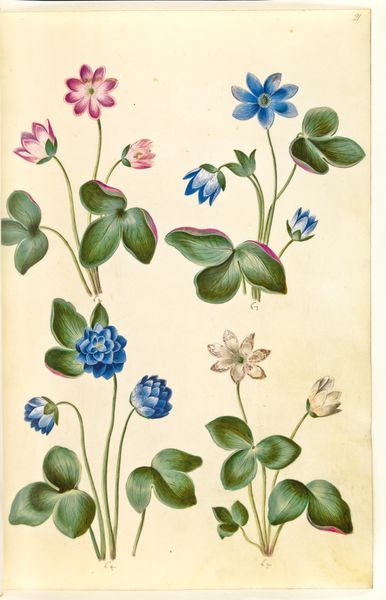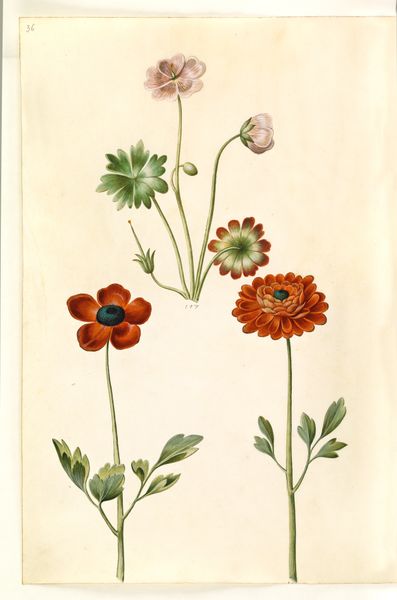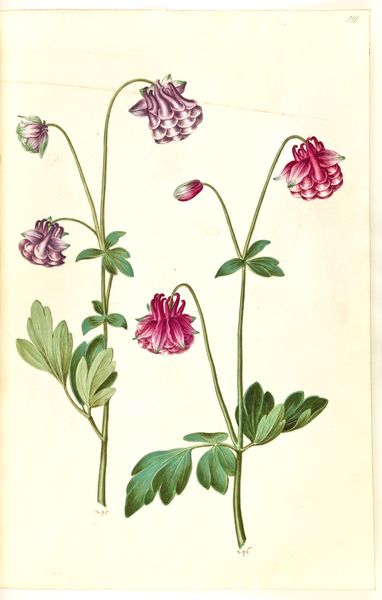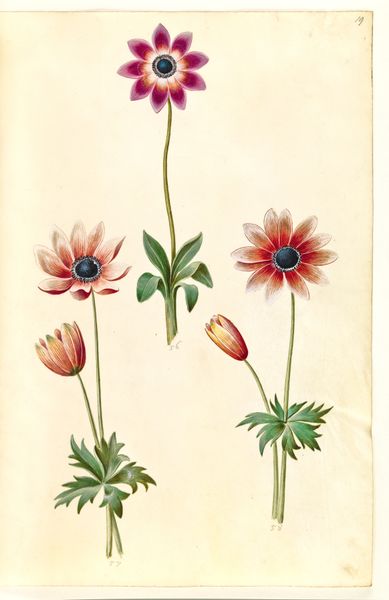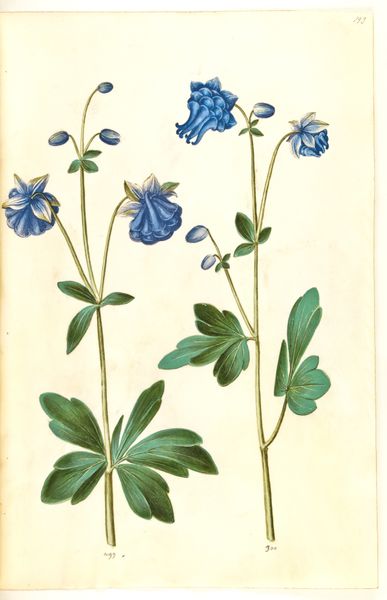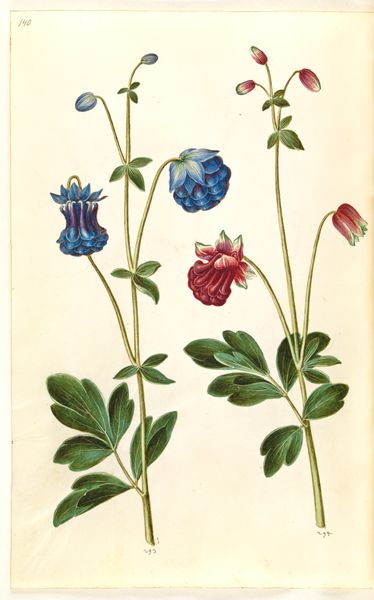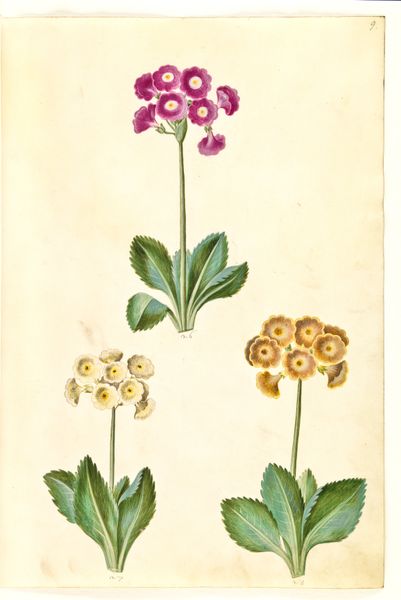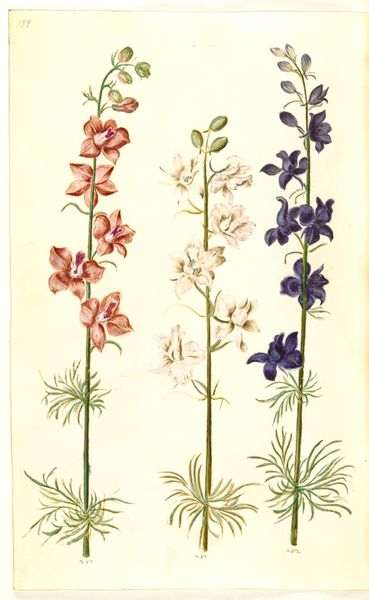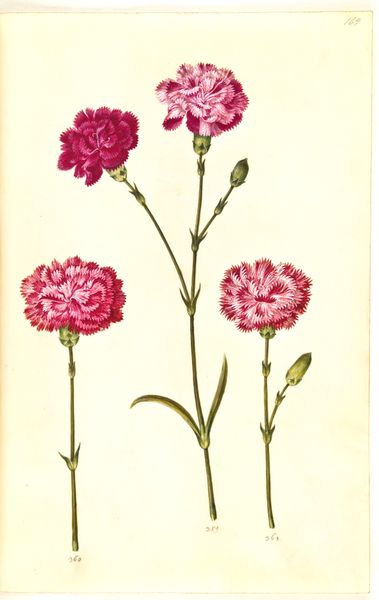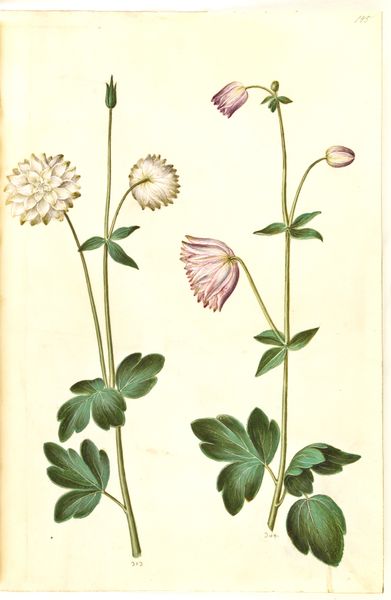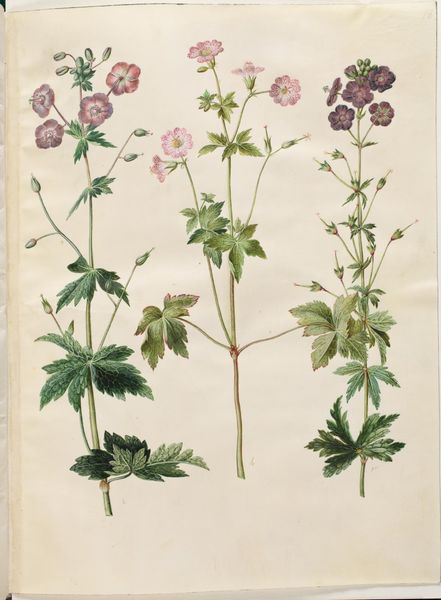
Geranium pratense (eng-storkenæb); Geranium phaeum (bølgekronet storkenæb); Geranium versicolor (net-storkenæb) 1635 - 1664
0:00
0:00
drawing, painting, gouache
#
drawing
#
painting
#
gouache
#
landscape
#
watercolour illustration
#
history-painting
#
academic-art
#
botanical art
Dimensions: 375 mm (height) x 265 mm (width) x 85 mm (depth) (monteringsmaal), 358 mm (height) x 250 mm (width) (bladmaal)
Editor: Here we have *Geranium pratense, Geranium phaeum, and Geranium versicolor*, created between 1635 and 1664 by Hans Simon Holtzbecker, using drawing, painting and gouache. It is stunning to me that we have botanical drawings here showcased at the art museum. How would you interpret the shift towards art within this piece? Curator: Well, it’s crucial to remember that what we classify as "art" versus "science" is a relatively recent development. In Holtzbecker's time, botanical illustration served multiple purposes. It was, of course, scientific documentation, used to identify and categorize plant species. But these illustrations were also commissioned by wealthy patrons, often for inclusion in elaborate "cabinets of curiosities" or to showcase the bounty of their gardens. Editor: So, it was about prestige and power as much as scientific accuracy? Curator: Precisely. These images communicated a patron's refined taste, wealth, and their connection to the natural world. They participated in a broader cultural fascination with collecting and classifying knowledge. Holtzbecker wasn't just depicting plants, he was contributing to a visual language that reinforced social hierarchies and power dynamics. The painstaking detail also suggests the slow, deliberate pace of courtly life, and perhaps also alludes to global trade networks by which these botanical species are spread across vast geographical areas. What stands out to you in its style? Editor: The precision is certainly striking; each vein and petal is carefully rendered. The composition also seems deliberately artful. Before, I was stuck on the science/art dichotomy but, reframing, there is artistry that showcases wealth and control. Curator: Exactly. And seeing the interplay between artistic skill and social function opens up a richer understanding of this seemingly simple botanical study. We move beyond the flowers themselves and begin to understand the politics of imagery in early modern Europe. Editor: I never thought of botanical art as something imbued with social and political weight, it’s a fantastic insight.
Comments
No comments
Be the first to comment and join the conversation on the ultimate creative platform.

